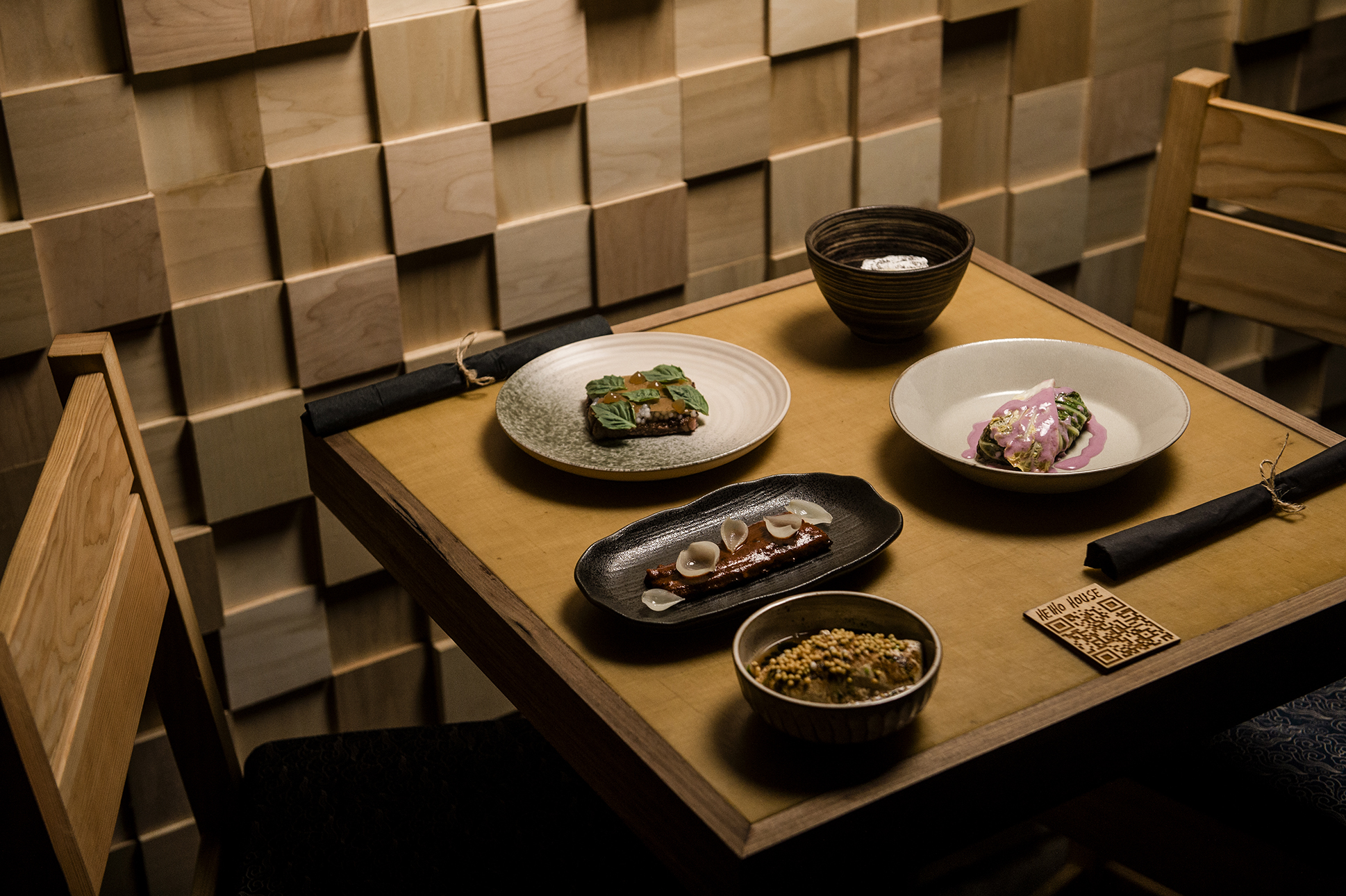Text by Rae Sojot
Introduction by Eunica Escalante
Images by John Hook
Over the past decade, the izakaya has slowly yet surely ingrained itself across Honolulu’s food scene. Originating in Japan, izakaya are casual eateries, where frothy pints of Orion and hypnotic cups of sake are held in equal esteem to the delectable platters of yakitori, kaarage, or udon. In Honolulu, izakaya have gained popularity not only due to Hawai‘i’s historic connection to Japan, but also because its informal approach to dining closely resembles Hawai‘i’s own laidback attitude.
As the number of izakaya-themed establishments grow, there are some that have found a niche, separating themselves from the rest. From plant-based sushi to artistically inclined dishes, here are three Honolulu eateries offering unique twists on the traditional izakaya concept.
A Vegan Twist: Tane Vegan Izakaya
Opening a restaurant demands practicality and passion. For Kin Lui, chef and owner of Tane Vegan Izakaya, it involved a bit of kismet too. One afternoon, while working as a sushi chef in San Francisco years ago, Lui came across an article about bycatch and declining fishing populations.
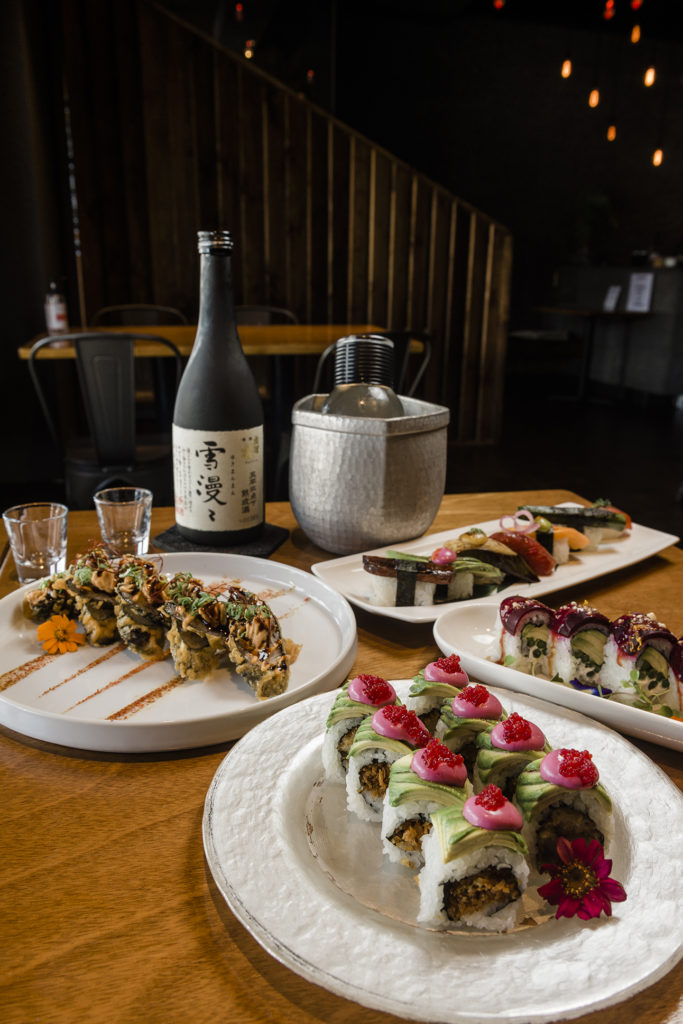
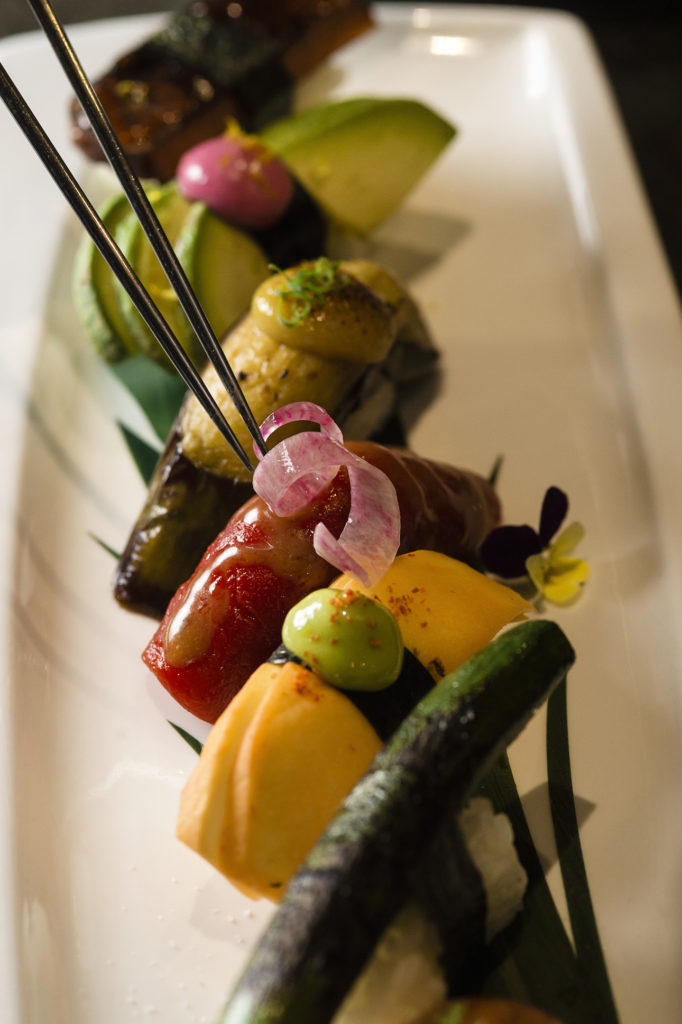
A few months later came a chance introduction to Casson Trenor, a sustainable seafood advocate. Lui, on the brink of opening his own sushi restaurant, was curious to know how his tentative menu looked through a lens of sustainability and asked Trenor to review it. Trenor agreed, and then proceeded to strike through nearly every fish offering on the menu. Lui sat back, gobsmacked. If his sushi restaurant offered at-risk fish, then other sushi restaurants did too. Something clicked, Lui recalls: Why not do something different?
Over the last decade, Lui has doubled down on being different, leading to a series of successful restaurants that reflect his pioneering spirit, including San Francisco’s Tataki, which offers solely responsibly sourced seafood, and Shizen, a vegetarian sushi spot. Tane, located in an unassuming corner of urban Honolulu, is Lui’s latest venture and his first in Hawai‘i: an entirely vegan sushi izakaya.
You May Also Like: An Ensemble Performance
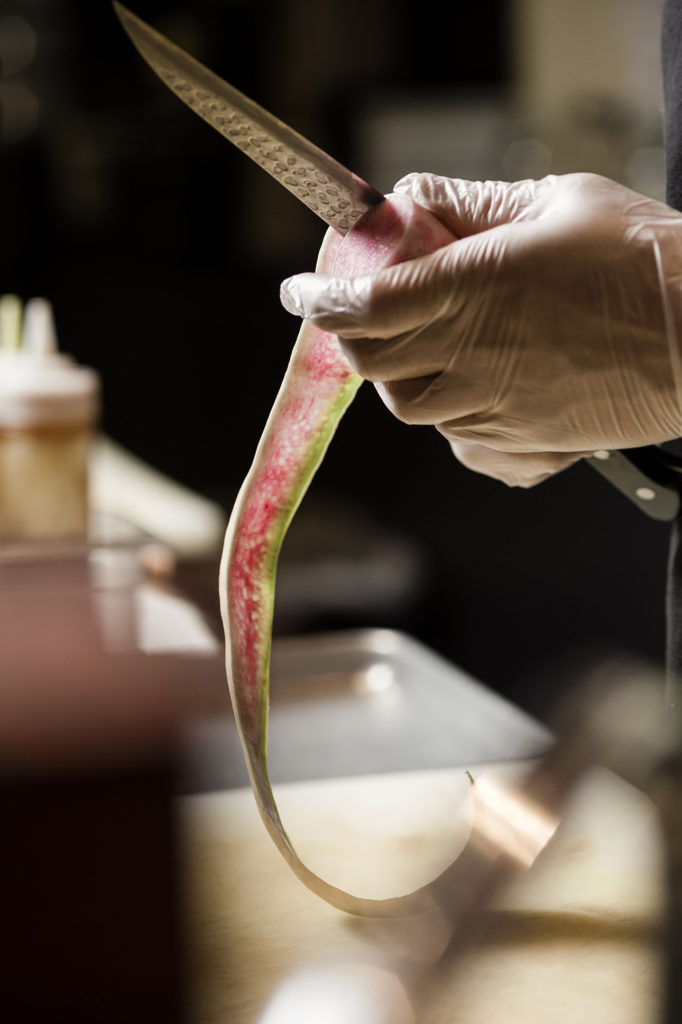
Located in an unassuming corner of urban Honolulu, is Lui’s latest venture and his first in Hawai‘i: an entirely vegan sushi izakaya.
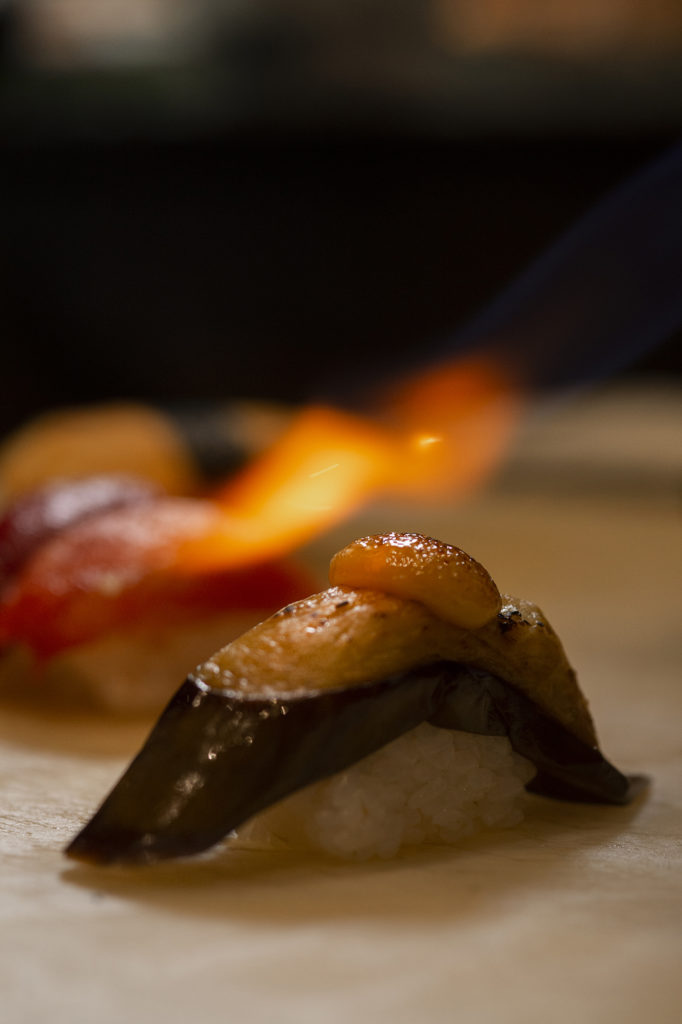
Since opening in 2019, Tane remains a daily labor of love for Lui and his team. Each morning, Lui checks his to-do list before spiriting around town for items like tofu and noodles. Then, instead of heading to the fish auction house for choice ahi and hamachi, Lui hits the local produce markets to scour crates of eggplant, daikon, and mango. He examines each item closely for perfect ripeness before making a final selection, an uncanny talent given the sushi chef is colorblind. “I go by feel,” he shrugs mysteriously.
Back at the restaurant, great attention goes into preparations. Tidy, rainbow-hued rows of pickled mango slices, bell pepper fillets, and okra line the display case. Radish are deftly pared into parchment-thin curls. Shiso leaf, smoked beet, and avocado crema stand at the ready.
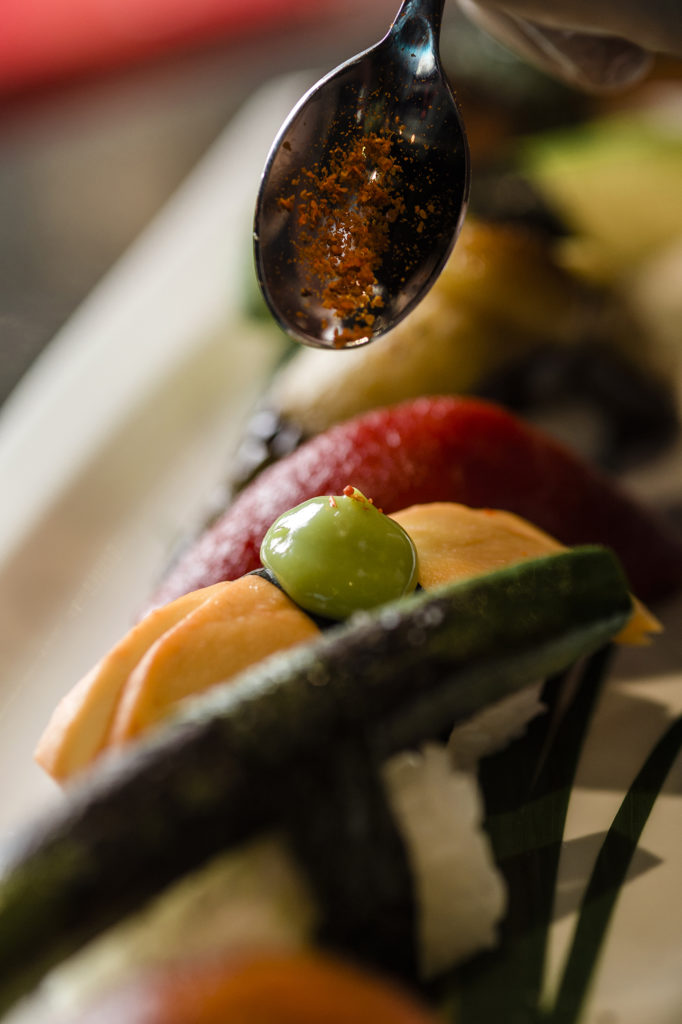
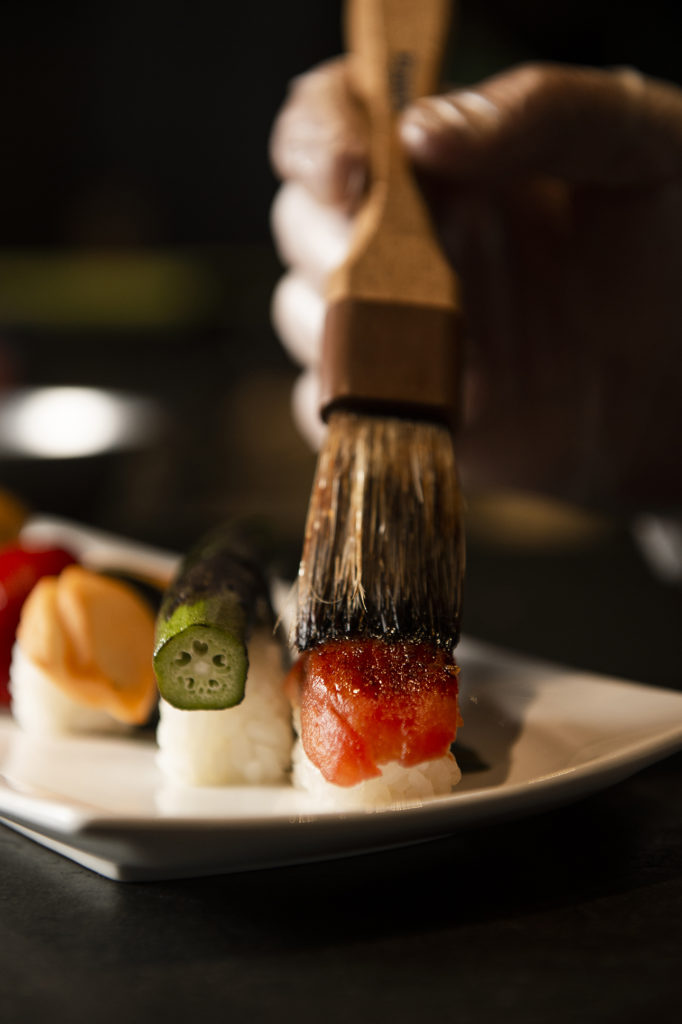
Despite the unusual sushi ingredients, tradition is still revered here, Lui explains as he carefully pares a cucumber into cylindrical sheaths. Having honed his skills in high-end Japanese restaurants, Lui hews close to that tradition, applying a meticulous, Zen-like methodology to his practice. The result? Sushi offerings that are exquisite, flavorful works of art, all courtesy of terra firma.
Today, Lui takes satisfaction knowing that Tane appeals to even the most skeptical carnivore. The bustling izakaya proves it. Often, Lui says, first-time guests will survey the surrounding tables, taking in the jewel-like sushi rolls and nigiri with curiosity. Scanning the vegan menu, they inquire, “So, what here tastes like fish?” To which Lui proudly responds, “Nothing.”
An Avant-Garde Take: Heihō House
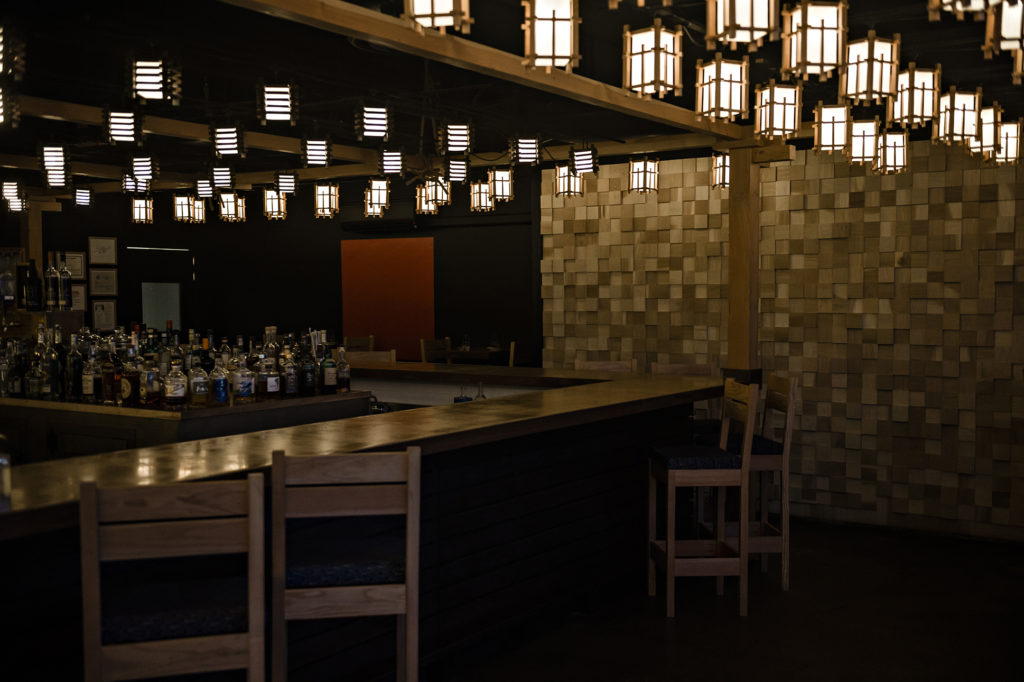
Sometimes what happens around the table is just as interesting as what is on it. Each evening at Heihō House, amid sounds of clinking glasses and silverware, guests can be observed marveling, contemplating, and gesturing over the plates set before them. Here, the unexpected reigns.
For chef Aaron Lopez, Heihō House is an opportunity for creative experimentation, something he especially enjoyed as a sculpture and clay artist in his early 20s. During that time, he had opened an art gallery with friends, and although the enterprise didn’t last long, Lopez loved the transient nature of the gallery’s art exhibits and the fresh energy they brought to his own creative process.
Now, a decade later, the artist-turned-chef has channeled that love for exploratory exchange in a different way, transforming eclectic ingredients into impressive, progressive repasts.
Since opening in 2020, this avant-garde approach has been the linchpin for Heihō House’s growing fan base. Gone are any expectations of how food should look or taste or even feel.
“The objective is to take something and see how far it can go,” Lopez says.
The restaurant’s menu offerings, which change every few months, feature unconventional flavors reminiscent of an apothecary: marshmallow root and chrysanthemum, sumac and saffron.
Presentation, too, is an exercise akin to Alice’s adventures in Wonderland: things are not as they seem. Miso soup arrives in deliciously unexpected, un-broth-like form. The Burning Tea House, a craft cocktail poured table side from a steaming teapot, is a piece of illusionary, interactive art: What looks hot to the touch is actually cold.

Lopez and his team delight in this sensory discombobulation and the animated discussion it invites among guests.
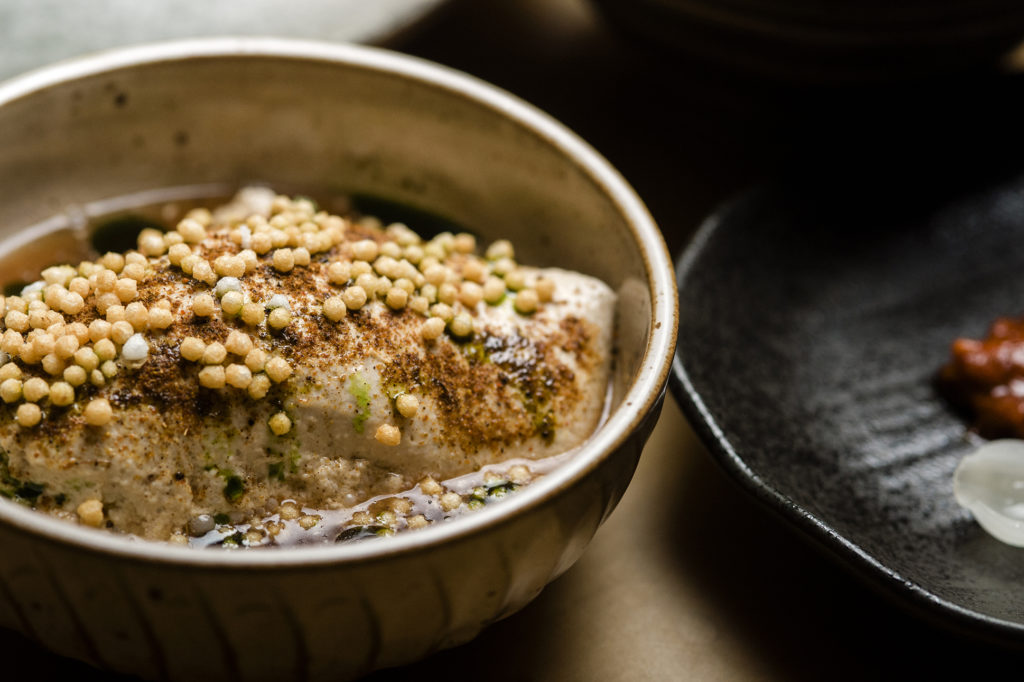
Heihō House’s emphasis on small dishes—a familiar hallmark of izakaya style—is purposeful; the plates are meant to be shared. As dishes arrive at the table, guests hem in close, their curiosity piqued.
Each bite offers an array of tastes and textures that are only sometimes synergetic, resulting in a momentary disconnect between mouth and mind. Lopez and his team delight in this sensory discombobulation and the animated discussion it invites among guests.
“Heihō’s focus is really in the experience,” Lopez explains.
That sentiment is underscored each night as Lopez and his team take guests on a journey of the senses. Under the glow of homemade lanterns, guests are served a key takeaway with each dish: At the intersection of ingredients, ideas, and innovation, the mind, too, can be fed.
A Taste of Home: Izakaya Naru
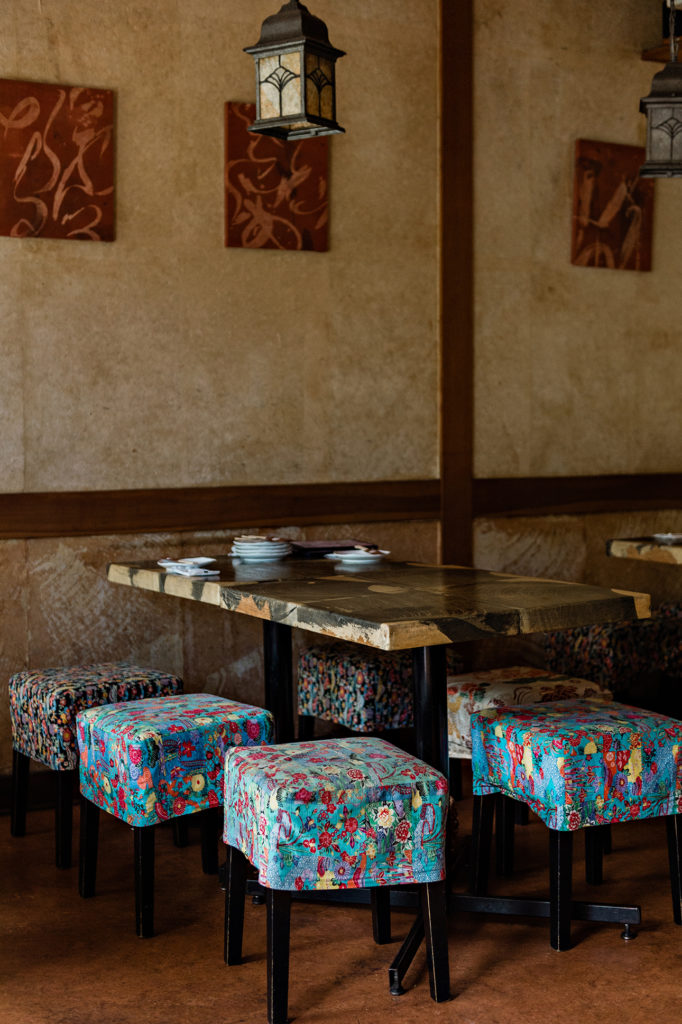

Classic izakaya bar culture is alive and well in Hawai‘i, even when it’s hidden in small pockets of Honolulu. At Naru, izakaya seekers will find themselves in familiar territory: the chorus of friendly greetings from staff, lively conversations punctured by shouts of “sumimasen,” the constant need to scoot one’s chair out of the path of servers loaded with pints of Orion draft. At Naru, the vibe is cozy, not crowded. The chaos is cheerful.
Naru may be small, but its spirit is big. When the izakaya first opened in 2010, owners were intent on maintaining its neighborhood-pub appeal. Although the izakaya’s growing patronage has merited expansion in the last decade, Chris Cody, Naru’s general manager, is reluctant to enlarge the space.
“We want to be able to talk to our customers,” Cody says, gesturing to the restaurant’s three small tabletops, which are all within a stone’s throw of the eight-seat horseshoe bar. “It would lose the feel if it got too big.” Such convivial intimacy is what makes Naru work. That, and its popular Okinawan-themed menu.
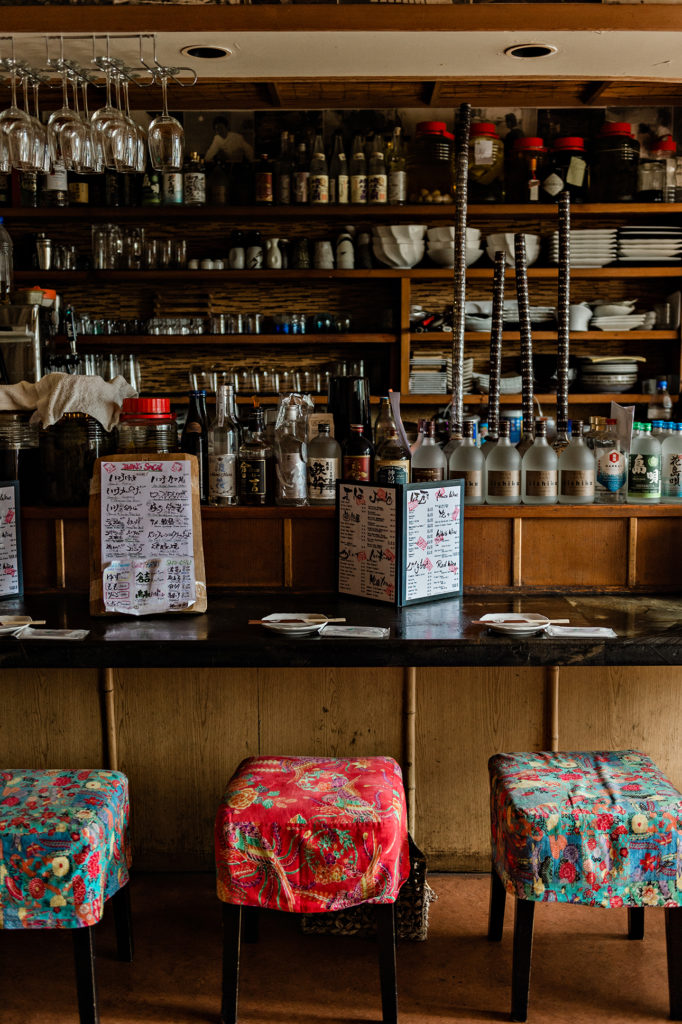
At Naru, the vibe is cozy, not crowded. The chaos is cheerful.
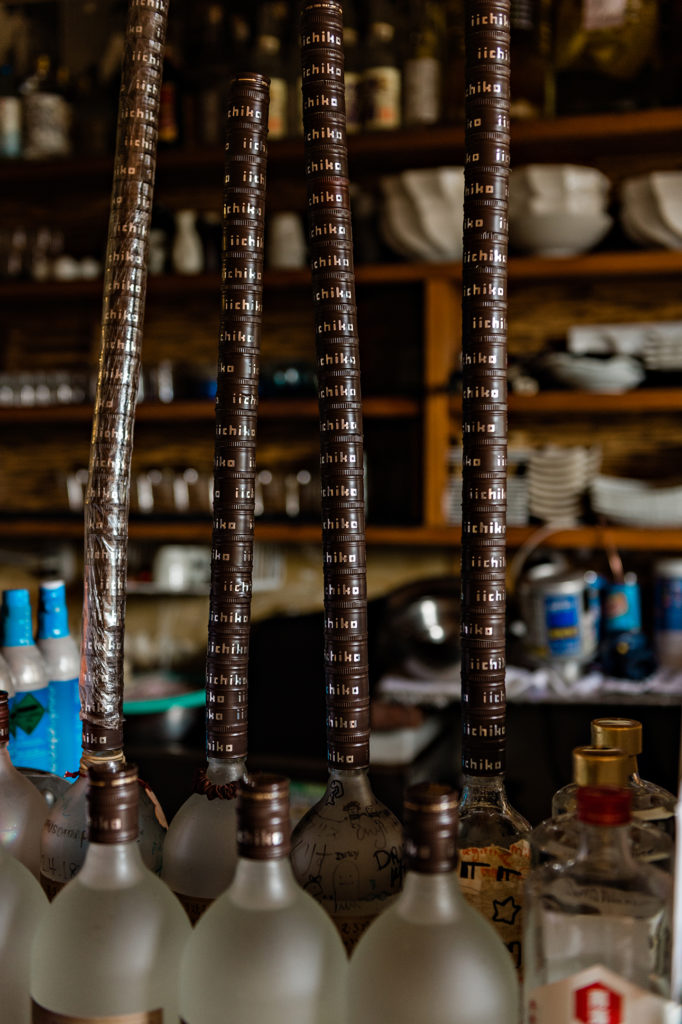
Originally envisioned as an udon spot, Naru shifted its focus after owners noted a steady stream of local Okinawan residents coming through the doors. Now, in addition to staple izakaya items like edamame and chicken karaage, Naru’s menu highlights Okinawan fare: bitter melon and pork dishes, Okinawan soba, and goya champuru—a tofu, bitter melon, spam, and egg dish that, according to Cody, is just like “the kind Grandma makes.”
Taco rice, which rose in popularity as a Tex-Mex yoshoku (Western cooking) snack found outside American military bases in Okinawa, is a fan favorite among Naru regulars. Served in a sizzling stoneware pot, the dish is prepared tableside and preferably accompanied by Naru’s house-made awamori. Deftly ladled from a trio of large glass canisters that feature flavors like shiso, pineapple, and coffee, this Okinawan-style shochu is a source of pride for Naru. Guests come specifically for it. “We are the only one on the island who make it like this,” Cody says.
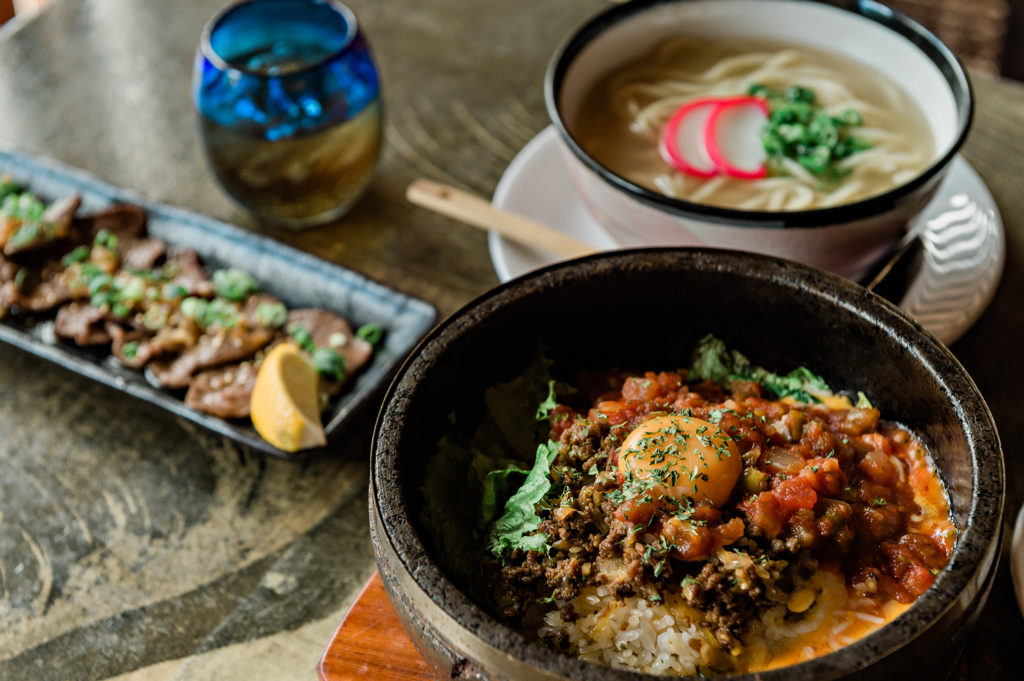
Cody, who is originally from Tokyo, shares the nostalgic affection for Naru felt by many of its patrons, who consider the izakaya a home away from home.
“Naru reminds me of a lot of the izakayas of Japan,” Cody says. “How it looks, the energy, how we yell out and people respond.”
Naru’s cheery hospitality shines from the initial greeting to the final farewell, when staff will often dash out to the street to wave a second goodbye. It’s a special, sincere send-off for Naru guests, one that guarantees a heartfelt return.




